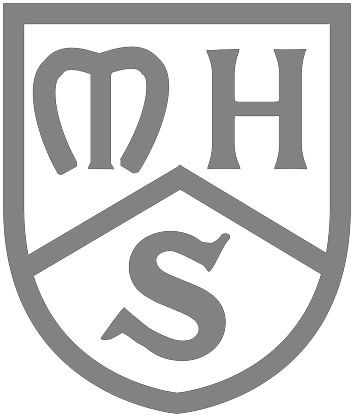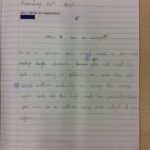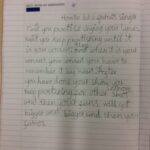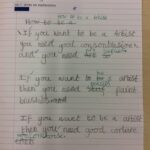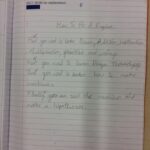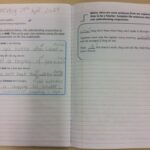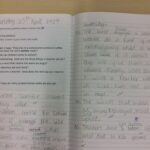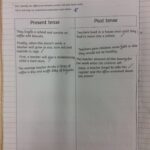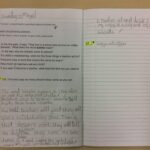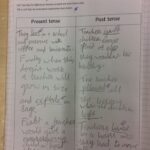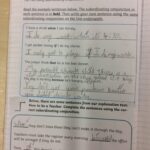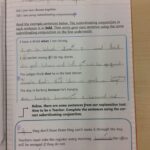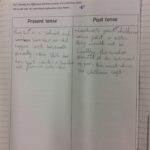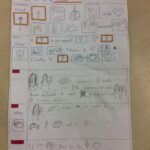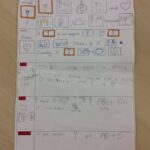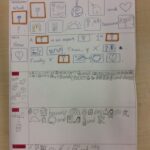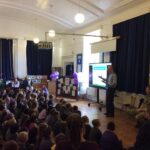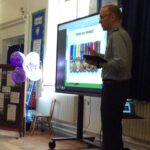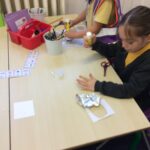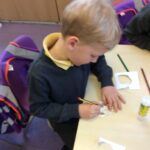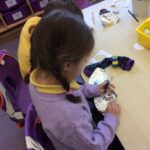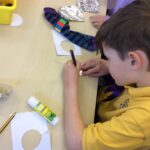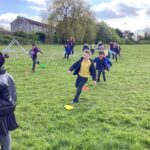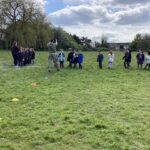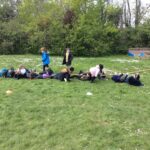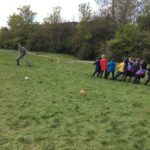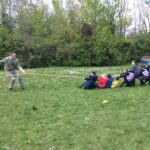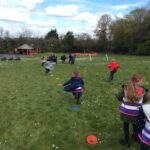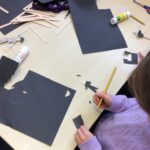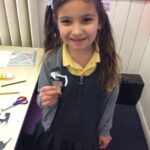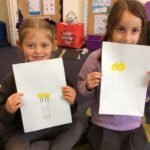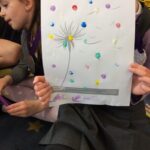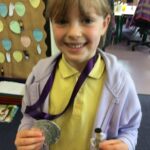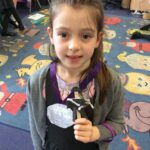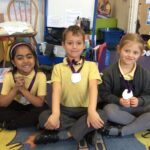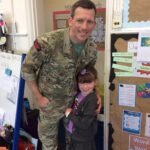Jul 182024
Year 2 Leavers 2023-2024!
We are so proud of Year 2. This week saw a major highlight in our academic calendar – The Year 2 Show! This year the show was Olympic themed and the children performed ‘The Merry Hill Games 2024’ to Nursery, Reception and Year 1, Year 3 at Ashfield and of course to you, our parents! We were guided through the games by our fantastic commentators, taking us from sporting scene to scene including the slowest marathon runners ever, superb cheerleaders, terrific tennis players and much much more!

We have been so impressed with the children’s ability to learn script and song words, to act, learn routines and remember when to go up and down to their stage positions. It is incredible to think that these children are only aged 6 and 7! It was truly remarkable and something I am sure we will all remember for a long time to come. Thanks to all who made this a success and for your continued support.
During our leavers song ‘Change and Grow’ the children sang
‘There are places we’ve loved and and those we’ve left.
There are days we remember well,
There are faces we know we shan’t forget,
But this day we move forward,
This day we move forward….
Here are some special events from Bears and Giraffes, during the year that will certainly be remembered…
Remembrance day:
The visit from the Fire Brigade to create our own Fire of London, using the houses we designed and made in Design Technology:
Mr Marvel visiting us in January.
Making leaf mandalas in the forest, having been inspired by Andy Goldsworthy:
Creating poses for our beach scene, so we could photograph, trace and paint them in the style of Edgar Degas:
Looking for minibeasts in their habitat in the forest and recording data for a graph!
Flying kites
Roald Dahl Museum Trip
Sports Day
What a wonderful year we have had in Year 2.
May we take this opportunity to wish you all a happy and restful summer break!
How you can help at home:
Read regularly with your child – do visit the library and sign up for the reading challenge!
Get out into nature for a walk, play in the park, kicking a ball around, bug hunting etc…
Keep a holiday diary for a week.
Make and write some postcards to family and friends.
Use every day scenarios to make Maths problems ie ‘I wash up 4 spoons, 3 knives and 2 forks, how many pieces of cutlery do I have altogether?’
Practise counting in 2s,5s and 10s
Link multiplication to division when sharing things out
Continue with Numbots and Reading Eggs.
Jul 112024
Open Afternoon in Year 2!
The children were very excited to showcase their hard work in Year 2, for all to see!
It was great to look back over the year to see everything that Bears and Giraffes have accomplished.
On display were our floor books for computing, RE and music, showing all that we have learnt through these lessons:
Our clay thumb pots that were made in the Autumn term, inspired by Clarice Cliff:

Sketchbooks displaying various pieces of Art carried out through the year:

Our recent beach scenes showing our figure drawing, following our artist study of Edgar Degas:

Our display boards, showing our ongoing learning:
It was lovely to see our Bears and Giraffes proudly show their grown ups around. It was also wonderful to see the children in Year 1 coming to visit and being excited about all that is in store for them.
Such a lovely afternoon celebrating children’s achievements! Thank you for coming to celebrate the children’s success!
Jul 042024
This week in Year 2!
It is a very busy time in Year 2 as the end of term approaches!
The Year 2 show rehearsals are in full swing. The children are working very hard and have done so well to learn their lines, song words, dance routines and when to come on and off the stage. The teachers are all very impressed! The children can’t wait to present to you ‘The Merry Hill Games 2024’!
On Tuesday, Bears and Giraffes visited Ashfield school to undertake a PE session organised by Year 5 (who will be at the top of the school next year). The Year 5s led three different games brilliantly and really looked out for their younger colleagues. The children rotated around the different stations and great fun was had by all! It was a wonderful opportunity for the children to mix together, chat and start building relationships. It also provided a perfect transition activity for Bears and Giraffes as they became more familiar with Ashfield, whilst engaging in relaxed and fun activities. It was great to watch and will prepare them well for their transition morning next week. We have lots of activities planned to positively support the children’s range of emotions in the lead up to the end of term and we thank you for your continued support in ensuring the transition is as seamless as possible.
How you can help at home- Please continue to practise lines and songs for the show.
- Continue to regularly check in with your child to see how their day has been. Ask about the highlights of their day. Also listen out for any worries, acknowledge the feelings (normal for change to cause them) and provide reassurance (please don’t hesitate to get in touch if necessary).
Jun 272024
2D and 3D shape in Year 2
This week in Maths we have been learning to use the correct mathematical vocabulary to name and describe 2D and 3D shapes.
We started this new learning sequence by having the class discuss what they already know about a square. They took turns to explain while the teacher drew shapes that matched their description but these drawing did not necessarily look like a square! This helped the children refine their descriptions. We got there in the end!
The teacher, with help, clarified that a square is a 4-sided shape. ‘All the sides are the same length and all the angles at the vertices are also the same size’.
We then named 2D shapes together. We thought of ways to remember the names. For example:
· Hexagon and six both have an x in so hexagons are 6-sided shapes.
· Octagon starts with the same syllable as octopus. I know an octopus has 8 legs so an octagon is an 8 sided shape.
· Quad-bikes have 4 wheels so a quadrilateral has 4 sides.
The children then used a collection of 3, 4, 5, 6, 7 and 8-sided shapes that were both regular and irregular to sort shapes, according to
· number of sides
· number of vertices
· regular and irregular (a regular shape has all sides the same length and all the angles (vertices) are the same).
Lastly we played the game ‘Knowing my shapes’ in groups of 4 . The children used a variety of 2D shapes and digit cards numbered 3-8. The children had to take turns to:
-Pick a card and then find a shape with that number of sides
-Name the shape and say one other thing about the properties of that shape
-If their partner agreed that what is said is correct, the player kept the shape
-The player with the most shapes won the game!
During our next lessons we will learn about 3D shapes by handling, naming and sorting. The following key sentences will help us:
- The flat surfaces on a 3D shape are called faces
- An edge is where 2 faces meet
- When edges join together this is a vertex
How to support at home:
- Hunt for 2D and 3D shapes in the environment and use their mathematical names
- Identify the properties of shapes you find using the vocabulary sides, faces, edges and vertices
- Look for lots of a chosen shape e.g. cuboids, how are they the same? different?
Jun 212024
Sports Day – The Merry Hill Games – Year 2
Today Year 2 had a great time taking part in Sports Day! The children loved waving their class flags, parading out to motivational music and taking part in the different events with great team spirit. The teachers were very impressed with how well the children kept going with all of the activities, even when they were a bit tricky. The children were also brilliant at cheering their friends on and encouraging them in their achievements.
Look at our photos!

Super goal scorers:
Great hockey dribbling:
Fun in the obstacle course:
Fantastic concentration in the egg and spoon:
Amazing bean-bag throwing:
The children were also super speedy in their running races!
Bears and Giraffes were very proud of their medals, awarded by Ms Adams and Reece (Mrs Earle’s son)
An amazing day was had by all!
How to help at home
- Talk about the things you most enjoyed about Sports Day with your family.
- Plan and take part in your own family sports day – what activities will you do? How long will each activity take? How long will the whole thing take?
- Watch different sports as a family on the TV. Get ready for the Paris Olympics 2024 starting on Fri 26th July!
- Visit the library and look for books about different sports.
Jun 132024
Roald Dahl’s Gallery visit
This week Year 2 were very excited and full of magic when they began their trip to the Roald Dahl Museum. When we arrived we were buzzing with excitement as if we we had received our very own Golden Tickets! We were quick to get unpacked and ready to begin the day of adventure.
We started in the Gallery with two lovely staff members. We gathered around and were introduced to the world of Roald Dahl; lots of us were excited to share what we already knew. They began telling us a tale of a friendly giant, which we guessed straight away was the BFG! They asked us if we thought the BFG had ever blown us a dream, lots of us thought so. Then, from the BFG’s very own suitcase, they pulled out his dream trumpet and dreams were spread over us all! We were very excited to sleep that night to find out what dreams the BFG’s trumpet had given us!
Next, we were as excited as Matilda is in a library when we ventured into the gallery. On the top floor, we were amazed by the illusion games we found to play with, the shadow pictures and above all the magical TV from Charlie and the Chocolate Factory that transported us onto the screen! Check out your Seesaw account for even more pictures of this! After that, we went down the magical glass elevator to the second room. This one was full of magical things from Roald Dahl’s stories. There was Fantastic Mr Fox’s tunnel, James and the Giant Peach, and even Matilda’s reading library! Some of us even got the opportunity to act out parts of Charlie and the Chocolate Factory!
Finally, we also had the opportunity to craft our very own Matilda book bag! We thought about our day and what we had learnt, seen and enjoyed and were inspired! Take a look at our crafting!
Overall, we had the best time on our trip and were thoroughly exhausted from all the excitement! What a fantastic experience and memory to share!
Jun 072024
Design Technology in Year 2!
This half term Year 2 are excited to be learning, designing and making kites!
This week the children have been excited to bring in their own kites from home and these have been displayed around the classroom for all to see! We have loved seeing the different shapes, designs and styles of kite.
Today we started our lesson by children brainstorming all they know about kites.
Our Word Aware word was product which means something that is made (produced) and usually sold.
We then looked at a powerpoint to help us understand how and why kites came about. Did you know that a 16 year old boy and his kite was a key person in starting the building of a Bridge over Niagra Falls? Before the building could begin, someone needed to get a line from one side of the gorge to another. Homan Walsh worked at flying his kite from the Canadian side to the US side of Niagra Falls. Finally after many days of trying in difficult January weather, he was successful! A thicker rope was then attached to the line, which allowed metal cables to be pulled over and then the building was able to start! Homan was rewarded 10 US dollars, which was a lot of money in 1847.We then looked at the wide range of designs of kites and named the different parts.
The children then went onto draw and label key parts of a kite in their sketchbooks.
Finally the children really enjoyed flying the kites that had been brought into school. What a great way to spend a Friday afternoon!
Over the next few weeks the children will learn about the designer Peter Lynn, design and make a kite and then evaluate their product. How exciting!
How you can help at home
If you have a kite, go and fly it together on a windy day
Look at pictures of kites together- can the children remember the names of the parts?
If time, research a bit more about Homan Walsh and how he helped the start of the building of the bridge of Niagra Falls.
May 232024
Year 2 science and computing!
In Science recently we have been thinking about habitats and what that means . We learnt a simple definition as part of our Word Aware program – ‘A habitat is a place where an animal or plant lives‘. We have been doing a lot of work understanding why different species of animal live in different habitats.
During ‘Mini Explorers’ we had the opportunity to hunt for minibeasts in our playground and forest, finding out what their habitats are like. The children loved exploring the forest area and looked under logs, under pallets, in the trees and found so many different types of minibeast in their habitat!
Here are some photos:
The children recorded what they found and where on the map, plus how many of each minibeast were spotted:
In computing we have been learning about graphing. Therefore, the children have taken this information (data) about minibeasts in their habitat, to create their own graph. They had to write a title for their graph, input the data (how many of each type of minibeast they found) and then generate their own block graph by following instructions. They then had to save their work. From this the children were able to interpret the data and answer questions:
- Which minibeast did you find most of?
- Which minibeast did you find least of?
The children also enjoyed generating pie charts and line graphs too!
Here are some finished pieces of work:
How you can help at home
Encourage your child to spend time in the garden, park or woodland to look for minibeasts in their habitats.
Record on a simple chart or map.
Together draw a simple block graph/pictograph to show the number of minibeasts found.
Discuss together and interpret the data. Which were the most/least popular minibeast found?
Research and discuss the habitats of other animals.
May 162024
Art
Our Artist this term is Edgar Degas whose main focus in his paintings are people and figures. So, we started the term with a whole class follow along to sketching a person’s figure. We had to use our light sketching lines and think about the proportions of the body parts. Lots of us found it funny when our teacher drew a figure with a large head and tiny hands, observing how the figure was not in proportion! This helped us when we began our own drawings.
Then, we used our photography skills to capture movement. We had to use the camera and think about the different angles we would need to capture our bodies in a photo. Thinking about the different poses we could make, we all chose a pose that we will be drawing ourselves doing!
Take a look at some of us below:
This week we began to practise sketching ourselves and thinking about our proportions from the photo. We have used tracing paper to experiment with learning how to proportion a body. We are looking forward to creating our final piece next week.
How to help at home:
- Get some chalk and draw around your figures on the concrete! What do you notice about the proportions of the body?
- Take a picture of mum or dad striking a pose.
May 092024
Maths in Year 2!
This week in Maths, Year 2 have been very busy learning to multiply by 5, following learning how to multiply by 2s and 10s.
The children have been excited to learn the mathematical terms ‘factor’ and ‘product’ and to know that multiplication is ‘commutative’ which means you can multiply the factors in any order and you get the same product. The children in Bears and Giraffes are very proud to be able to talk like a mathematician!
The children have been counting in 5s forwards as well as backwards, looking at equal groups of 5 (arrays) and filling in missing numbers for equations and solving word problems involving the multiplication of 5.
Alongside multiplication we have been learning about time. The children enjoyed making a ‘human clock’, with children holding numbers 1-12 and moving around it in a clockwise direction. They used their recent learning on halving and fractions to work out that 30 minutes is half an hour. The children then used their little clocks to make o’clock and half past times, ensuring that the hour and minute hands were in the correct position, checking in with their partner as they did.
They were then able to record half past times with confidence. Well done! It is quarter past and quarter to next!
How you can help at home:
- Practice counting in 5s- tapping knees as you count.
- Make arrays of 5 objects ie pencils, pasta shapes and marbles and count them (we often ask the children, “What do you see? What do you notice?” which really helps them explain their thinking)
- Encourage your child to tell the time using o’clock, half past (then quarter past and quarter to)
- Ask your child to draw a clock of their favourite time, showing the correct position of the hands and the correct length.
May 022024
Explain, Explain, Explanations!
For the last two weeks, year two have been working really hard learning how to write explanation texts in English. An explanation text is a piece of writing that explains how to do something.
We began our unit of learning like every other English unit, with a cold task. This is when we complete a task at the beginning of the unit, that will then be compared to the end of unit hot task to measure the progress we have all made in our understanding of writing an explanation text. We were given freedom on what to write about for this and our teachers were very impressed that we retained some important knowledge from previous learning, for example time words and use of headings.
Take a look:
Then, we began learning our class text: How to be a Teacher! We all found this text particularly amusing, for example the sentence “They live in a school and survive on coffee and biscuits.” gave us the giggles. When learning the text, we focused on some key skills our teachers assessed from our cold task that we needed some support in: subordinating conjunctions, present tense verbs and using our comprehension skills.
Take a look at some of the work we have achieved so far:
Finally, we are now beginning our independent task where we will apply some key features to our own explanation texts. The new text is called “How to be a Child” and we certainly have some hilarious headings in our explanation texts, such as “How to be Mischievous” and “Why the McDonald’s and Pepsi?” (which linked to the teacher version “Why the Coffee and Biscuits?” because us teachers consume a lot of these allegedly).
Take a look at some of our plans for our hot task:
- Class text map
Remember to check Seesaw for our recorded versions of your child’s explanation text.
How to help at home:
- Play ‘Spot the conjunction’ when reading a non-fiction text. We have been looking at subordinating conjunctions, i.e. because, when, if, that.
- What is a verb? Can your child tell you the present tense and past tense of a verb, for example: I run –> I ran.
- Dare your child to write a “How to be a Parent” explanation text. I’m sure it’ll have you both smiling from ear to ear!
Apr 262024
Purple Up Day in Year 2!
April is the month of the military child and we are glad to have some children whose parents are in the Armed Forces within our community here at Merry Hill Infant School. Today we learnt a bit more about what it means to be part of a military family.
We started our day by having an assembly with Padre Nicoll. He reminded us about the different Armed Forces; British Army, Royal Navy and Royal Air Force and we learnt how they help us. He also told us why it is called Purple Up Day – it is a combination of green from the Army, blue from the Navy and RAF and red from the Marines (part of the Navy).
We learnt that the official emblem of the military child is the dandelion because its seeds are blown far and wide by the wind but it will plant and blossom anywhere it goes. In the same way, the military child has to move around due to military postings, involving new homes and schools – which can happen as often as every 2 years!
During the day all the children had the opportunity to make their own medal. We thought about the characteristics that can apply to military children and then thought about the characteristics that applied to us all at Merry Hill; ambitious, collaborative, curious and healthy learners. We also thought about characteristics we might have been working on personally. We then crafted a medal using card and tin foil.
We also had the opportunity to experience a military themed warm- up and game, plus tug of war which was great fun! Thanks to Lt.Col Dan for giving his time today. Everyone had such fun!
In Golden time we could do do dandelion painting or finger prints and make military figures using lolly sticks and card.
In our final circle time we went around and said the characteristic we have been working on and our teachers awarded us our medals at the end of the day. Well done to all!
